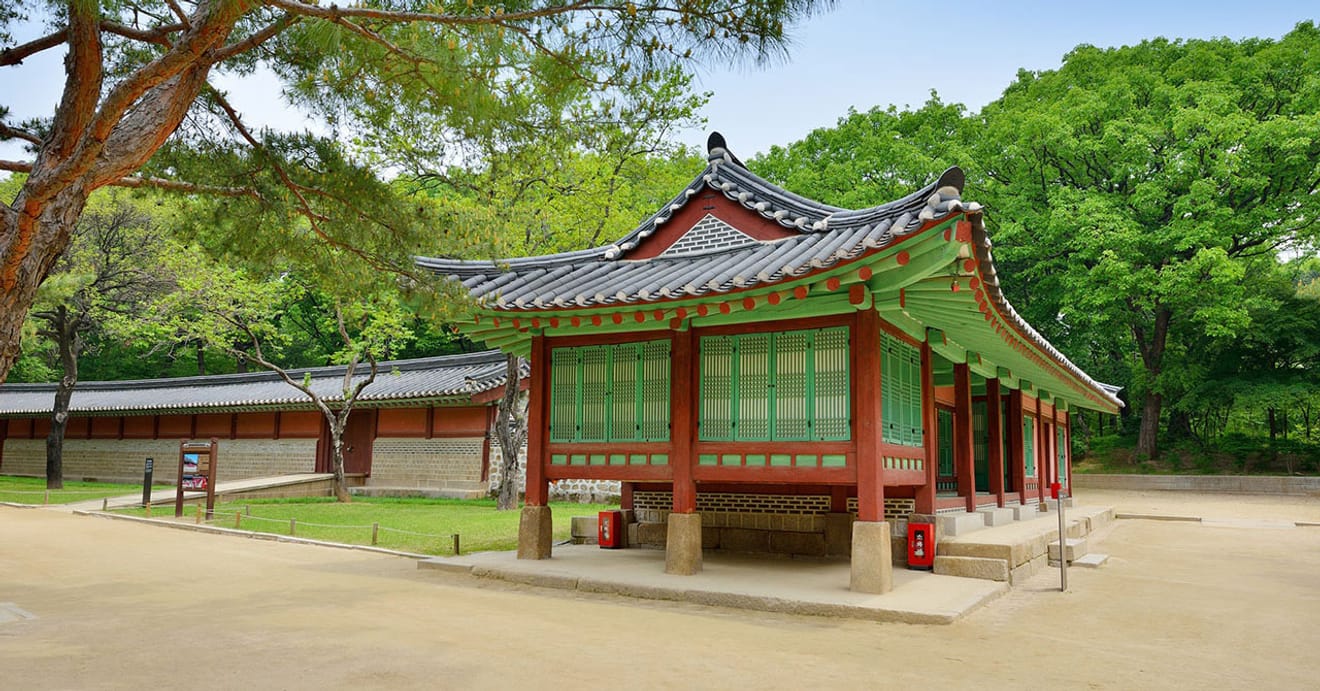- 궁능유적본부
- 궁능유적본부에 오신 것을 환영합니다
The Charm of Jongmyo, Nestled in a Lush Forest within the City
Jongmyo, the nation's highest-ranking shrine, is where the ancestral tablets of Joseon dynasty kings and queens, emperors and empresses, are enshrined and where sacrificial rites are performed.
It was built after the founding of Joseon in 1394, and after being destroyed by the Imjin War in 1592,
it was newly restored during the reign of King Gwanghaegun.
It has retained its 17th-century appearance intact, leading to its inscription as a UNESCO World Heritage site in 1995,
and the Jongmyo Jerye ritual and Jongmyo Jeryeak music were also inscribed as UNESCO Intangible Cultural Heritage.
Mangmyorue: A Space for Commemorating the King and Former Monarchs

Myeongmyoroo (Source: National Heritage Administration)
Mangmyorue was where officials who managed Jongmyo conducted their duties, and it also served as a space where the king would commemorate former monarchs before Jongmyo Jerye rituals.
It is usually closed to the public, but it will be open for a limited time until June to commemorate the opening anniversary of the National Heritage Administration and to showcase the diverse aspects of Jongmyo.
It will be open for a limited time until June.
Jongmyo Jerye Recreated with LEGO

Colin Jin's artwork, <LEGO Ohyangchinjebanchado>, depicting the Jongmyo Jerye with 20,000 LEGO pieces ©Parkbun (Source: 120seoulcall blog)
The Hyangdaejeong exhibition hall has been reorganized into two rooms, showcasing various content themed around the World Heritage Site of Jongmyo, Jongmyo Jerye, and Jongmyo Jeryeak. Notably, the 'Jongmyo Ohyang Chinjebanchado', a Joseon-era painting depicting the Jongmyo Jerye ritual, has been recreated using over 20,000 LEGO bricks, making it a particularly interesting exhibit.
In particular, the Joseon-era painting depicting the Jongmyo Jerye ritual, 'Jongmyo Ohyang Chinjebanchado', is recreated with about 20,000 LEGOs, which is fascinating.
Tips for Visiting Jongmyo
Mangmyorue: Open for a limited time until June
Hyangdaejeong Exhibition Hall: Open to visitors
Jongmyo: More Than Just a Solemn Place, Korea's Finest National Heritage
Since Jongmyo is a shrine where the ancestral tablets of kings and queens are enshrined and where sacrificial rites are performed,
many people tend to perceive it as a solemn and formal place.
However, Jongmyo is Korea's finest national heritage, located in a lush forest within the city,
and it offers a vibrant experience of Joseon-era architecture and sacrificial rituals.
Through this Hyangdaejeong exhibition and the special opening of Mangmyorue, gain a deeper understanding of the essence of Jongmyo and Jongmyo Jerye,
and create lasting memories while admiring the beautiful scenery of Jongmyo.
Jongmyo Official Website: http://contents.history.go.kr/
Royal Palace and Historic Sites Administration Website: https://royal.khs.go.kr/ROYAL/contents/R706000000.do

Comments0